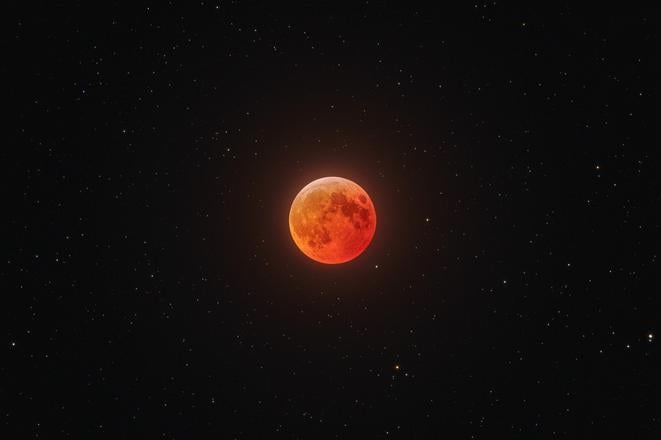For the first time in more than six years, Slovakia will witness a total lunar eclipse this Sunday, September 7, just after sunset.
The eclipse will begin at 19:30, reaching its maximum phase roughly an hour later. Observers will not need any equipment to enjoy the spectacle, as the event will be clearly visible to the naked eye. At its peak, a brick-red full moon will rise above the eastern horizon.
Why does the moon turn red?
A lunar eclipse occurs when the Earth passes directly between the sun and the moon, casting a shadow on its natural satellite. Depending on which part of the Earth’s shadow the moon enters, astronomers distinguish three types of eclipse: penumbral, partial and total.
Every total eclipse begins with a partial phase, when the moon starts moving through the Earth’s shadow. Once it is fully obscured, the moon appears reddish. According to astronomer Petr Horálek from the Czech Astronomical Society, this happens because only the longer, red, wavelengths of sunlight reach the lunar surface. These rays can bend through the Earth’s atmosphere and into the planet’s shadow, colouring the moon.
The brightness of the moon during a total eclipse depends on atmospheric conditions. The more polluted Earth’s atmosphere is, the darker the moon appears. The duration also varies: if the moon passes closer to the shadow’s centre, the eclipse lasts longer.
This weekend’s event will be among the longer ones, lasting one hour and 22 minutes.
When and where to watch
The eclipse will begin just after sunset, though the exact conditions will differ across Central Europe. In Košice, for instance, the moon will rise 25 minutes before the start of totality, offering observers a clear view in twilight. In Prague, by contrast, the Moon will rise only after the total phase has already begun.
In Bratislava, the moon will rise at 19:21, just nine minutes before the beginning of totality. The maximum phase will occur at 20:11, with the total eclipse ending at 20:52. Until about 21:56, observers will still be able to see the moon leaving the Earth’s shadow.
Public lunar eclipse viewing
Several observatories and astronomy clubs in Slovakia will host events on Sunday, September 7, offering the chance to watch the total lunar eclipse with expert commentary:
Maximilián Hell Regional Observatory and Planetarium in Žiar nad Hronom
Observatory in Partizánske Museum
Cultural Centre of Southern Zemplín in Trebišov
Observatory and Planetarium in Prešov
Kysuce Observatory
Space School Poprad
M.R. Štefánik Observatory and Planetarium in Hlohovec
Vihorlat Observatory in Humenné
The eclipse will also be streamed online, for example on the Time and Date website.
Saturn will also be visible east of the moon with the naked eye, while amateur astronomers using telescopes will be able to spot Neptune.
This is the second lunar eclipse of the year – the first took place on March 14, when only a partial phase was visible from Europe. The next total eclipse will occur in March 2026, but will not be visible from Slovakia. The following one, however, will be spectacular: on New Year’s Eve 2028, a total lunar eclipse will take place just hours before midnight.


